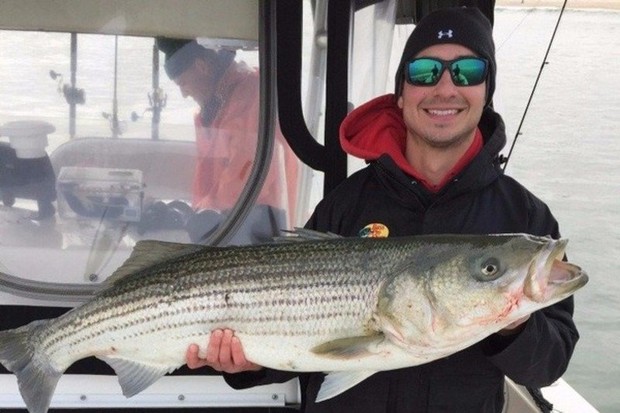A 29-year-old New Jersey surfer’s diagnosis with a rare amoeba disease was a shock to his family. And with just 34 other known cases in the U.S. in the past 10 years, the circumstances were rare.
But Fabrizio Stabile’s situation was familiar to other families in the country who have seen what the brain-eating amoeba can do to a human host.
Heidi LaMeyer, a Minneapolis nurse and mother, lost her daughter Hailee to the same amoeba 10 years ago, just days after the 11-year-old went to a lake near their house.
It happened in the span of a week. “She went swimming on Monday, got sick on Wednesday and died on Saturday,” LaMeyer recalled.
Stabile, of Ventnor, had been in a wave pool at BSR Cable Park in Waco, Texas, before his death at Atlantic City Medical Center on Sept. 21, according to The Associated Press.
The 29-year-old had tested positive for Naegleria fowleri — an amoeba that typically occurs in warm fresh water, according to a GoFundMe page started by loved ones to create a foundation in his memory.
When Stabile returned to New Jersey, he reported having a sudden severe headache while mowing the lawn, which only grew worse the next day.
When his mother checked on him, he could not move or speak coherently and was rushed to the hospital, where he was treated for symptoms of meningitis, according to the GoFundMe page. He was diagnosed with Naegleria fowleri just a day before he died.
So, what is this terrifying disease that can kill a person so quickly?
Here’s everything you need to know about Naegleria fowleri.
What is Naegleria?
Naegleria fowleri is an amoeba that typically lives in warm fresh water. It causes a disease called primary amebic meningoencephalitis.
In PAM’s early stages, the symptoms include severe frontal headaches, fever, nausea and vomiting. As the disease progresses, the stage-two symptoms include a stiff neck, seizures, hallucinations and coma.
Stabile suffered from some of these symptoms before he was rushed to Atlantic City Medical Center and treated for meningitis.
Hailee was treated for similar symptoms. She was given antibiotics and antivirals, but the brain-eating amoeba, known scientifically as Naegleria fowleri, is neither a bacteria nor a virus. LaMeyer didn’t know her daughter had been infected by Naegleria fowleri until two years after her death. Until that point, her cause of death had been classified as unknown.
LaMeyer, who now chairs Swim Above Water, an amoeba awareness foundation, said hospitals have come a long way in their understanding of diseases caused by amoebas. Though the fatality rate from Naegleria fowleri is high, it’s preventable and has some treatment options.
“All we do know is that it lives in soil and water, and can live in a human host,” said Steve Smelski, who founded the Jordan Smelki Foundation in honor of his son who died from the amoeba when he was 11.
“No one knows why it likes brain tissue, but once it’s in, it’s in a warm environment and it starts to divide and eat at the brain.”
How common is it?
It’s pretty rare to contract, the Centers for Disease Control and Prevention says. However, the infections that do occur typically happen during the summer months and September, and often when “it’s hot for prolonged periods of time.” The amoeba loves hot water. The hotter the better, and the lower the water level the better, the CDC says.
In the past 10 years, 34 cases have been reported, the CDC said. Since 1962, when the first case was reported, there has been a total 143 reported cases.
There could be more though, LaMeyer said. The infection caused by Naegleria fowleri isn’t on the list of diseases that doctors have to report to the CDC, like chickenpox, Lyme disease or sexually transmitted diseases.
“We believe there’s quite a few more people like my daughter out there, where they didn’t know what it was and their deaths are classified as unknown,” LaMeyer said. “Reporting helps because we get a better understanding of actual impact.”
There are other amoeba awareness groups like LaMeyer’s that have pushed doctors to to ask patients with meningitis-like symptoms if they’ve been in fresh water recently.
Where do infections usually occur?
Infections are more common in the Southern states with warm climates, particularly Florida and Texas. There’s never been a case reported to be contracted in New Jersey since the CDC began tracking in 1962.
It’s highly unlikely you’d find it in a swimming pool, the CDC says. However, the amoeba thrives in freshwater areas such as lakes and rivers.
People become infected when the amoeba enters the body through the nose. It travels up through the olfactory nerve and into the brain.








